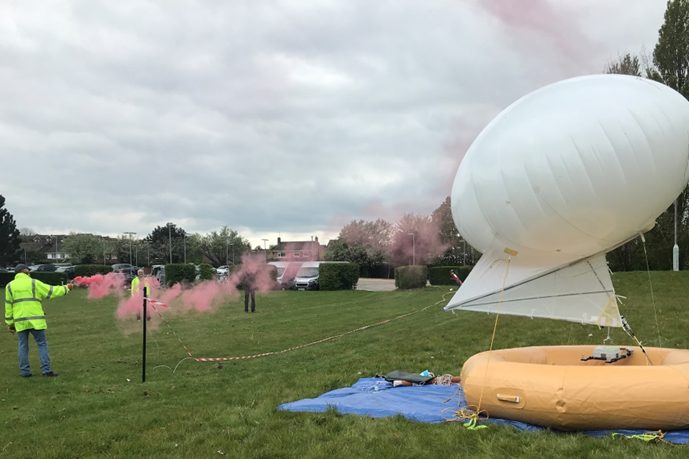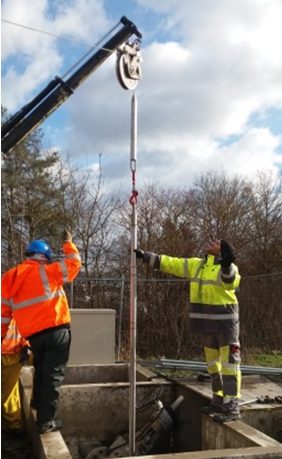Making recommendations for the management of carbon dioxide storage and unconventional hydrocarbon extraction sites
The safe operation of geoenergy and subsurface storage sites is required to help meet net zero carbon ambitions.
04/10/2021 By BGS Press
BGS is the lead organisation in a 16-partner consortium to deliver the Horizon 2020 SECURe project — €8.5 million of EU-funded research focused on subsurface evaluation of carbon capture and storage (CCS) and unconventional hydrocarbon risks.
The three-year project has been funded from the European Union’s Horizon 2020 research and innovation programme and brings together world-leading expertise from research and commercial organisations across seven European countries. It has gathered impartial scientific evidence relating to environmental monitoring and risk mitigation that will guide subsurface geoenergy development.
The project has produced a set of best-practice recommendations for establishing environmental baseline conditions for unconventional hydrocarbon production and the geological storage of anthropogenic carbon dioxide (CO2). This includes outputs addressing how to develop effective communication strategies with different stakeholder groups.
The project has published its recommendations in a series of nine factsheets. Each recommendation is also underpinned by research and technical reports, with more than 41 published to date. The reports include:
- risk assessment for:
- leakage from CO2 storage and unconventional hydrocarbon extraction (UHE) sites
- induced seismicity
- environmental baseline and monitoring strategies
- advanced monitoring and sensor technologies
- impact mitigation and remediation
- development and exchange of best practice associated with CO2 storage and UHE sites

SECURe – providing best-practice recommendations across these domains for the protection of groundwaters, surface environments and local communities during subsurface geoenergy activities. BGS © UKRI.
The importance of participatory monitoring
As CO2 storage occurs at significant depths, monitoring data and the knowledge developed from these observations require significant expertise to aid their interpretation and make value judgments about the safety and efficiency of the storage processes.
Developing innovative monitoring tools and participative monitoring methods can support the understanding of the subsurface by non-expert stakeholders and give them more insight into the impact of the activities on the environment and the way potential risks are being managed.
SECURe has developed improved participatory monitoring tools that, although focused on CCS and shale gas activities, are also relevant for other subsurface activities, such as geothermal projects or the storage of heat and gases — for example, hydrogen.
Ed Hough, SECURe coordinator.
Project recommendations
The risk framework developed by SECURe identified four principal hazards associated with geological CO2 storage and CCS, and five associated with unconventional hydrocarbon extraction.
The project employed the ’bow tie’ risk assessment approach, which identifies a series of barriers that prevent a principal hazard from occurring. These events were identified through a literature review of hazards, threats, consequences and barriers associated with CO2 storage.
Each factsheet addresses a principal hazard that can occur if control of a hazard is lost and provides recommendations to help with mitigation. The recommendations can be considered to inform preventative or mitigative strategies for risk management. They can also be used to inform site development and management strategies from the perspective of multiple stakeholders.
Development of innovations within the SECURe project
Over its three-year lifespan, the project has advanced a number of monitoring and remediation techniques using ‘technology readiness levels’ (TRL), a type of measurement system used to assess the maturity level of a particular technology.

Overview of the EU Horizon 2020’s technology readiness levels (TRLs) utilised in the SECURe Project to track progress of innovations. BGS © UKRI.
Examples of innovations advanced during the SECURe project include:
- methodology optimisation for methane and higher hydrocarbon concentrations/isotopic ratio measurements in groundwater and soil gas
- an unpiloted aerial vehicle-based CO2 sensor was progressed to TRL 6
- methods for the field sampling and preparation of material suitable for analysis for gas-source based microbial sensors were advanced to TRL 3
- a tool for the detection of potential leakage (rate) of high heavy-metal concentrations (progressed to TRL 4) was refined to analyse elemental mobilisation during the interaction of the Bowland Shale Formation (a principal shale gas exploration target in the UK) with simulated hydraulic fracturing fluids
- a noble gas downhole sensor (progressed to TRL 8) was field tested and improved within the SECURe project to successfully analyse gas/water ratios and volumes of inert gas

Deployment of tools down a borehole. © SECURe Innovations.
Involving local communities in participatory monitoring
Further work is needed to build trust in geoenergy experts to improve societal acceptance of innovative geoenergy projects. To create legitimacy, a stakeholder participation process should be open to new information and insights to allow for (re)positioning and enrichment of viewpoints, including minority opinion.
Involving local stakeholders at all stages of the design and implementation of a project, including decisions on what is monitored and the monitoring approach itself, can improve trust in the proposed activities and risk-management strategies.
When implementing a technological design, thinking beyond the technology itself is needed, iteratively including institutions and stakeholder interactions to genuinely embed it in a societal context.
Bringing together international research partnerships
An important part of the legacy of the SECURe project has been to foster enhanced international collaboration between research teams and organisations that share common goals and interests in the fields of environmental monitoring and risk reduction for new uses of the subsurface.
Collaboration with leading groups in Europe, USA, Canada and Australia has been a key part of the project. These are all regions with an interest in decarbonising energy use through the adoption of underground CO2 storage, or the extraction of hydrocarbons via enhanced oil and gas recovery or exploitation of shale gas and oil.
Through these connections, SECURe initiated the ‘International Platform for Environmental Monitoring’ (IPEM), which is expected to continue in the form of regular, biannual events led by a steering committee, focusing on environmental monitoring and effective community engagement for low-carbon energy projects and other related activities.




